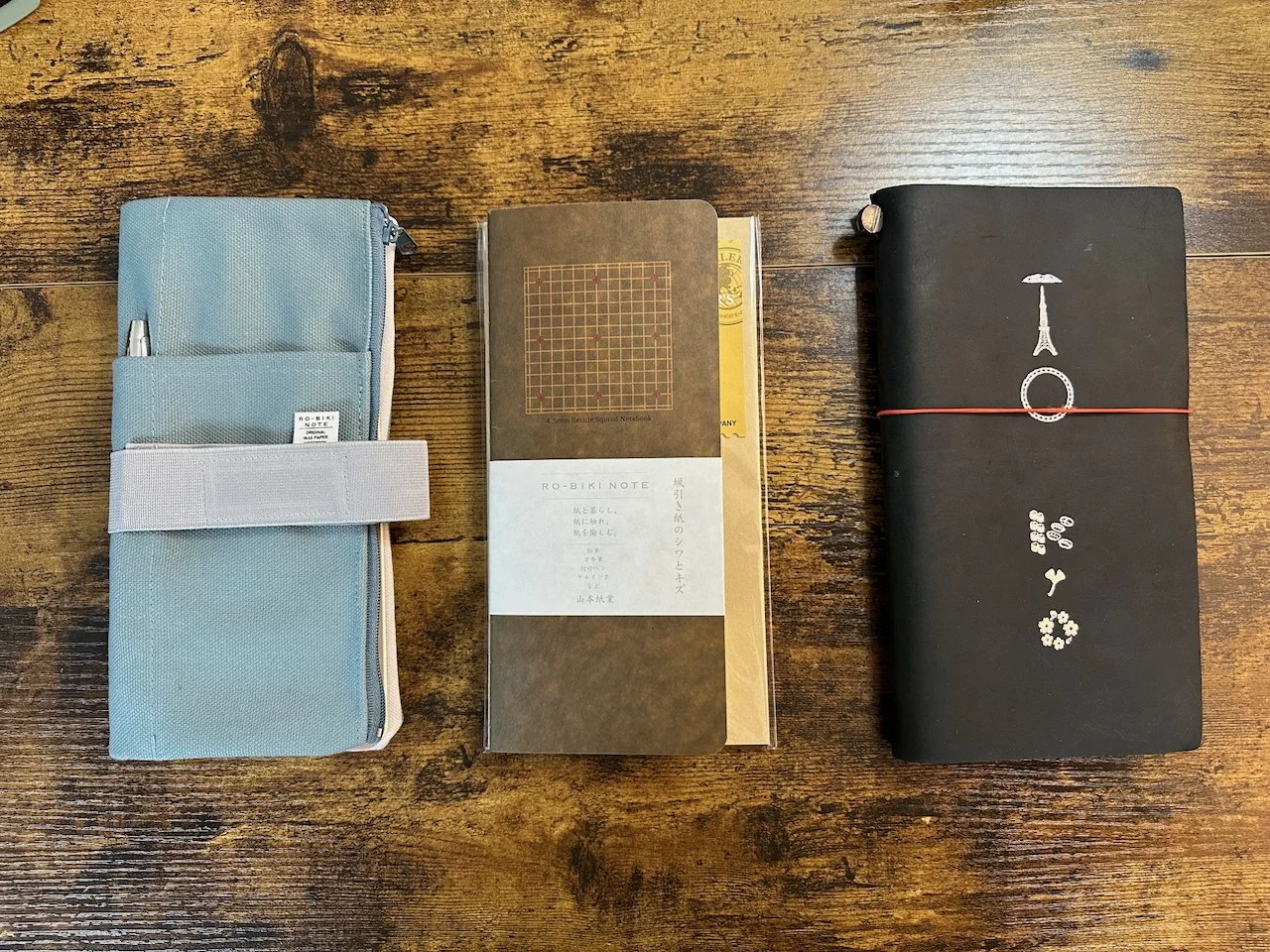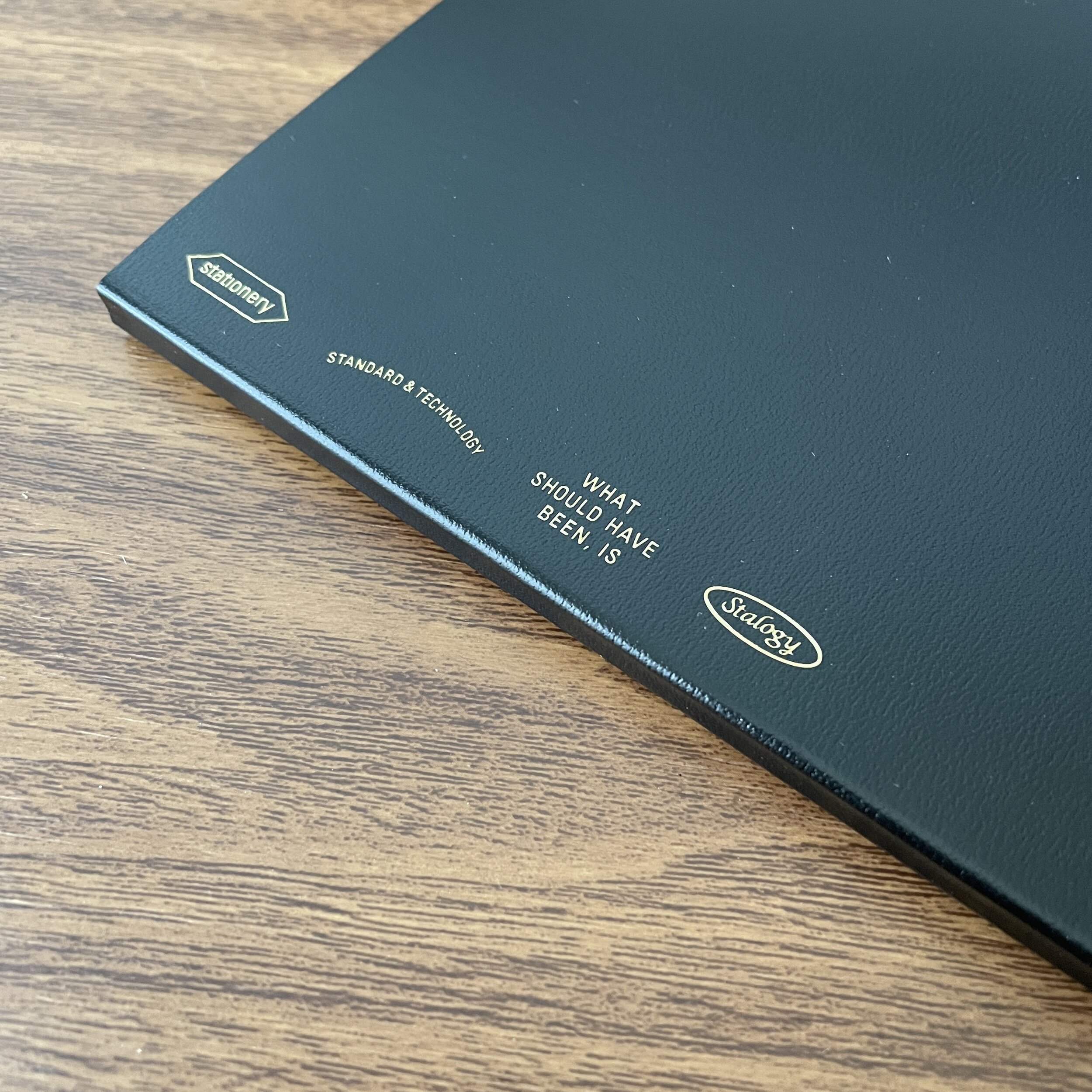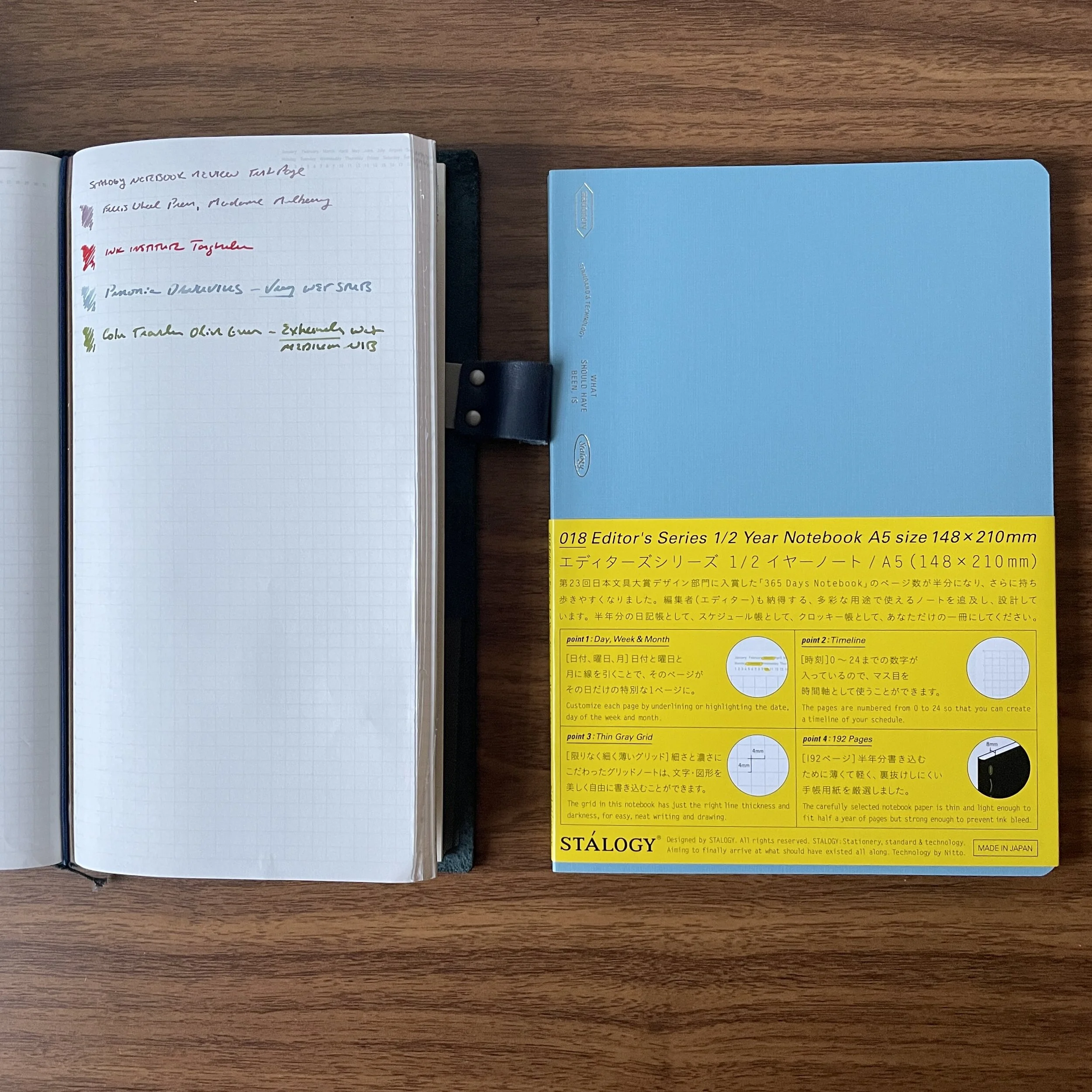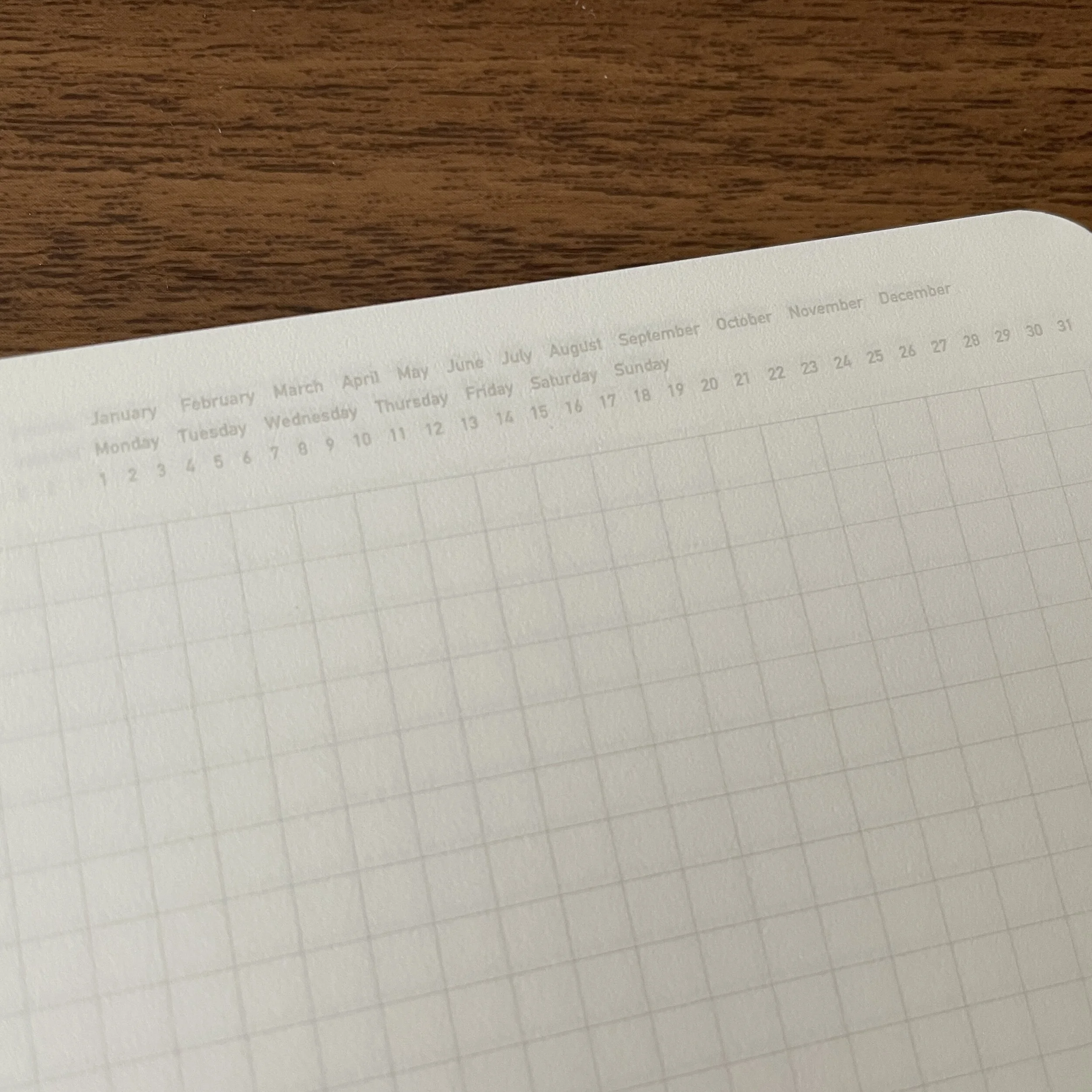Since I’m becoming something of a notebook system specialist (Check out our new resource here!), I sometimes get questions about how the different systems compare to one another. While the Traveler’s Notebook is the most widely known “tall narrow” notebook format, there’s another option out there: The “Ro-Biki Note” series of notebooks from Yamamoto Paper. Online photos can create the perception that these two systems are related and/or interchangeable, and that’s not necessarily the case. Here are a few key differences:
The Ro-Biki canvas cover is actually more of a wrap. It ships with a velcro strap that not only closes the cover but also allows you to secure pens and other accessories in the outside pocket.
Different Measurements. While both Traveler’s Notebook and Ro-Biki are the same height (8.25”), the Traveler’s refill notebooks are roughly 4.25” wide, and Ro-Biki notebooks are 3.75” wide. This means that Ro-Biki notebooks will fit in a standard-size Traveler’s Notebook cover but a Traveler’s refill will be too wide for the Ro-Biki canvas cover (unless you trim the Traveler’s refill down).
Different Paper. Both brands use excellent paper that works well with a wide range of writing instruments - including fountain pens. Traveler’s Company mostly uses Midori MD paper for its standard refills (both companies share the same corporate parent), while also offering a wider range of options including watercolor, sketch, and ultralight Tomoe River paper. For the Ro-Biki notebooks, Yamamoto has chosen a soft cream-colored paper that I’ve seen identified as either “Chiffon Cream” or “Soliste” (which is one of the select papers in Yamamoto’s latest round of A4 packs). Again, both brands use good paper and this will come down to personal preference.
Different Build/Aesthetics. Traveler’s Company uses a cord-based system to hold the refills inside a basic leather cover that closes with an elastic band. The Ro-Biki is a bit more unique, in that Yamamoto has commissioned a cotton canvas cover that incorporates a zippered case and pockets along the outside. If you enjoy the Ro-Biki paper and notebook dimensions, you might find that the Ro-Biki also offers more built-in functionality out of the box, though this comes at the expense of customization. Those looking to avoid leather might also prefer the Yamamoto option.
I might take a Ro-Biki to the beach next week, since I can take it to the pool and down to the water without worrying about water getting splashed on leather.
Sorry, some of my writing had to be blurred here, for personal reasons.
Ro-Biki notebooks attach to the canvas cover by sliding the back cover of one notebook into a pocket, and then attaching additional notebooks to the “anchor notebook” using two supplied rubber bands, which are very thin and unobtrusive. Oh, and can we also get a shout-out for reticle grid? It’s one of the more underutilized rulings, IMHO.
Regardless of which stationery pouch I’m carrying, I have post-it notes, stamps, and document flags with me.
Takeaways and My Personal Thoughts
Traveler’s Notebook and Yamamoto Ro-Biki Note are different products that I suspect will appeal to different users. Traveler’s Notebook is more of a truly customizable system/system techo, while I’d characterize Ro-Biki as a notebook with a bit of built-in functionality in the canvas cover (which may be perfectly adequate for many users). Update: I’ve published a YouTube demonstration of me setting up the Ro-Biki, plus a size comparison with the Traveler’s Notebook.
Personally, I love Yamamoto’s Soliste paper, and I’ve enjoyed using one of the Ro-Biki reticle-grid notebooks for testing. This was enough to make me grab one of the covers for myself, as I already have Soliste hole-punched in my Plotters for general writing and the Ro-Biki Note paper has the same soft feel to it. (I’d love to confirm whether these are indeed Soliste notebooks - stay tuned.) Whatever paper it is, it’s handled all my inks quite well, and it makes me want to keep writing with it.
As of today, we have Yamamoto Paper Robiki covers and Robiki-Note notebooks in stock, and of course we continue to offer the full Traveler’s Notebook lineup and the new similarly sized Lochby Voyager Journals. Come see us in-store this week, starting tomorrow and Friday from 1-6, and Saturday from 10-6. Next week (July 13-20) we will be on vacation so get your shopping in before then!





